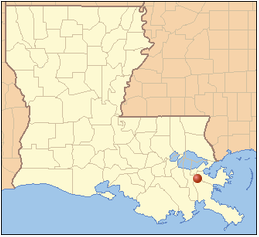| Home | Search | Emissions | Pollutants | About the Database |

Phillips 66 (2418), Belle Chasse
LDEQ Accident Report
| Accident # | 156589 |
| State Police # | 14-02533 |
| Accident Date | 2014-06-09 |
| Report Date | 2014-06-16 |
| Follow-up Date | 2014-10-20 |
| Follow-up: | Yes |
Pollutants Released
| Pollutant | Duration | Point Source | Greenhouse Gas | Criteria Pollutant | Ozone forming chemical | Amount of Release |
| Sulfur Dioxide | 4h 45m | Sulfur Recovery Unit Incinerator (2774-V3) | NO | YES | NO | 732.0 pounds |
Accident Classified As: Reportable Quantity
Cause of Problem: Process Upset
On June 9, 2014 the Sour Water Stripper (SWS) Unit experienced unexpected pressure swings and fluctuating rates in its overhead system resulting in reduced unit efficiency in both the 592 Sulfur Recovery Unit (SRU) the Tail Gas Treater Unit (TGT) subsequently causing an increase in sulfur dioxide (SO2) emissions at the TGT's incinerator (591-D-21X) based upon the stack So2 CEMs monitor. Preliminary information from the investigation indicated an unexpected SWS feed composition change adversely impacted SRU and TGT operation resulting in elevated SO2 emissions at the TGT's incinerator. Sour water production from various refinery units were reduced in order to stabilize SWS operations and improve sulfur conversion rates at the SRU, which improved SO2 emissions at the incinerator. A Root Cause Analysis (RCA) investigation was completed and revealed that an unexpected slug of hydrocarbon and hydrocarbon particulate in the sour water feed to the Sour Water Stripper (SWS) Unit. This hydrocarbon was unexpectedly trapped in the feed line between T-101 and the SWS Unit and was released as Tank-101's feed valve was opened during the initial steps of the sour water tank swap. This hydrocarbon contamination resulted in unstable SWS overhead operations that produced pressure and flow swings which further deteriorated proper sulfur recovery at the 592 SRU Unit. Loss of proper sulfur recovery at the SRU Unit resulted in H2S breakthrough at the Tail Gas Treater (TGT) and burning of this H2S in the SRU Incinerator stack causing So2 emissions to spike. As part of determining all contributing causes to this incident, further investigation revealed that the preparations for using Tank-101 for use as the alternative sour water tank may have contributed to the event. It is suspected that the required flushing of the alternative sour water feed tank's line in preparation for use may have unexpectedly trapped a slug of hydrocarbon in the flush piping. Another contributing factor to the incident was the fact that there was no available sampling point in the flush circuit which would have allowed confirmation of good hydrocarbon separation from the sour water as well as no hydrocarbon particulate.
Discharge Preventable - No
An unexpected change of Sour Water Stripper (SWS) feed composition caused upset conditions in the SWS overhead and other downstream SRU operations.
Notes/Remedial Actions
Immediate corrective action: Immediately implemented sour gas shedding by reducing rates from refinery units that produce sour water. SRU operations were stabilized and incinerator emissions were reduced. A Root Cause Analysis (RCA) identified the following measures to prevent recurrence: 1) Improve sour water line flushing procedure to ensure optimum sour water quality and to minimize feed dead legs in the lines that can trap hydrocarbon and hydrocarbon containments, 2) Evaluate lining up the SWS overhead gases to the Flare Gas Recovery System when swapping sour water feed tanks.

Connect With Us: